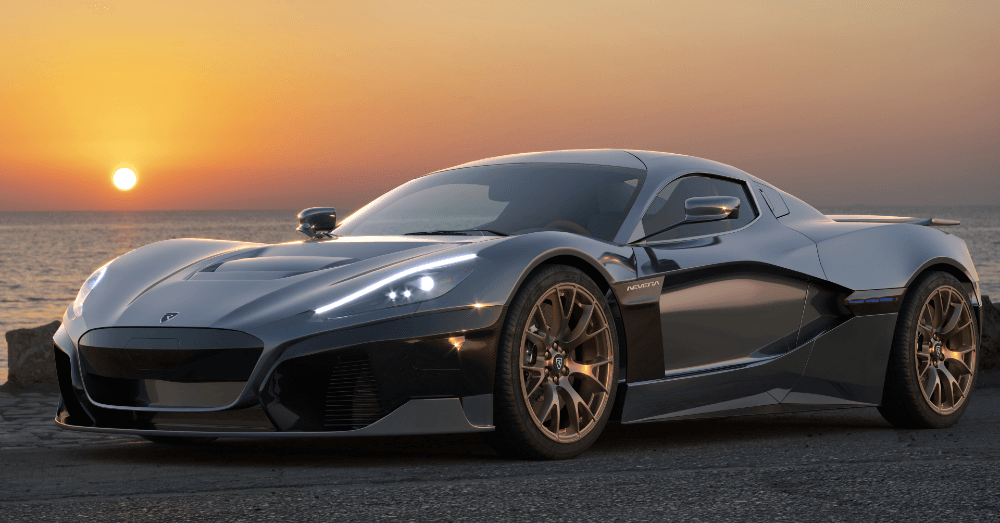Will electric performance cars ever replace the gas-powered monsters that we know and love? What is the future of electric performance cars?
It’s not difficult to understand how electric cars can easily beat traditional performance cars on the track. The delivery of instant torque allows EVs to rocket off the linen and reach maximum speeds much faster than any gas-powered car possibly could. Still, EVs lack the natural rumble of a massive V8, the incredible smells of exhaust, or the engaged feeling of shifting gears in a performance car with a manual transmission.
That said, Some of the fastest electric performance cars are giving gas-powered cars a run for their money. We might not see electric sports cars replace gas-powered models anytime soon, but EVs are carving out a niche for themselves.
What are the ten fastest cars in the world?
Despite their cost, the fastest cars in the world give us an idea of how electric cars are entering the market and where they fall. Although EVs can take off from a standstill much faster than gas-powered vehicles, they generally don’t have the top speed figures of some of the top names in the world. The ten fastest cars in the world are:
- Koenigsegg Jesko Absolut – 330 MPH
- Hennessey Venom F5 – 311 MPH
- Bugatti Bolide – 311 MPH
- Bugatti Chiron Super Sport 300+ – 304.7 MPH
- SSC Tuatara – 282.9 MPH
- Koenigsegg Agera RS – 277.8 MPH
- Bugatti Veyron Super Sport – 268 MPH
- Rimac Nevera – 258 MPH
- Aston Martin Valkyrie – 250 MPH
- McLaren Speedtail – 250 MPH
Among these, only one is an EV: the Rimac Nevera. The rest have at least a V8 engine under the hood, and some have engine blocks that are much larger than that. Still, with one EV among the ten fastest cars in the world, you can see how electric vehicles are beginning to enter the market where only gas-powered cars previously resided.
What are the ten fastest electric production cars
The Rimac isn’t included in this list because of its price and rarity, but that doesn’t mean the list is a bunch of slouches. If you were looking for electric performance cars that can give you the driving pleasure and performance desired, this might be where you would start.
| Model | Top Speed | 0-60 MPH | Price |
| Lucid Air Sapphire | 200+ MPH | 1.99 seconds | $249,000 |
| Tesla Model S Plaid | 200 MPH | 1.99 seconds | $104,990 |
| Lucid Air Grand Touring Perormance | 168 MPH | 2.5 seconds | $179,000.00 |
| Tesla Model X Plaid | 163 MPH | 2.5 seconds | $104,990 |
| Tesla Model 3 Performance | 162 MPH | 3.1 seconds | $52,990 |
| Porsche Taycan Turbo | 161 MPH | 2.6 seconds | $194,900 |
| Audi RS e-Tron GT | 156 MPH | 3.1 seconds | $143,900 |
| Porsch Taycan Turbo S Cross Turismo | 155 MPH | 2.7 seconds | $197,500 |
| Tesla Model Y Performance | 155 MPH | 3.5 seconds | $56,990 |
| Mercedes-Benz EQE AMG 53 4Matic+ | 149 MPH | 3.2 seconds | $106,900 |
As you can see, there’s a massive difference between the cars on this list and the Rimac Nevera, but that would be similar if we looked at production gas-powered models compared to those rare hypercars on the list above.
Where have automakers focused?
Although electric performance cars are pretty cool and can be a lot of fun, that fun might be short-lived if an EV doesn’t have a decent driving range. The past decade or so of electric car development has focused largely on increasing the driving range, making recharging quicker, and developing SUVs and trucks to provide the market with some variety.
What are the pros and cons of EVs?
Pro: Performance and power delivery
EVs are extremely quick (just look at the 0-60 MPH times above), and that makes them a lot of fun. Even electric trucks have proven to be quick off the line, making them more fun to drive. This instant acceleration makes them more enjoyable on any road or track.
Con: Batteries don’t last forever
Some gas-powered engines can last decades with proper care and maintenance, but electric batteries lose charging abilities over time and eventually that loss is translated into loss of driving range.
Pro: Better for the atmosphere
Electric vehicles produce zero tailpipe emissions and are much cleaner than gas-powered vehicles. This is a huge selling point for some people in terms of clean motoring on the roadways.
Con: Lack of charging locations
In order to create a new part of any industry, government support is required to ensure widespread adoption. America’s EV charging infrastructure is pretty weak, which can make it difficult to find EV charging stations, especially during road trips.
Electric performance cars are carving out a part of the automotive world, but it will likely be years, or even decades, before they push gas-powered performance cars out the door.

